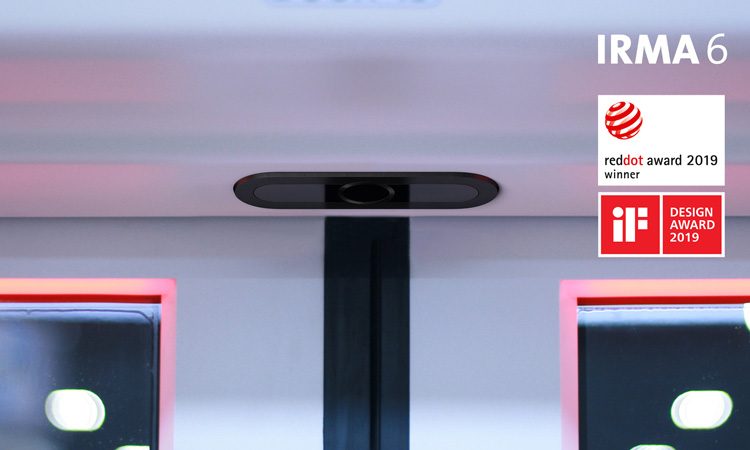iris intelligent sensing: intelligent sensing for public transportation
- Like
- Digg
- Del
- Tumblr
- VKontakte
- Buffer
- Love This
- Odnoklassniki
- Meneame
- Blogger
- Amazon
- Yahoo Mail
- Gmail
- AOL
- Newsvine
- HackerNews
- Evernote
- MySpace
- Mail.ru
- Viadeo
- Line
- Comments
- Yummly
- SMS
- Viber
- Telegram
- Subscribe
- Skype
- Facebook Messenger
- Kakao
- LiveJournal
- Yammer
- Edgar
- Fintel
- Mix
- Instapaper
- Copy Link
Posted: 4 June 2019 | iris | No comments yet
Accurate and reliable passenger counting data is crucial to making the key business decisions in public transport that could be the difference between success and failure – is there an intelligent solution?


The iris portfolio of sensor technologies for automatic passenger counting comprises a wide range of performance classes. The highly-accurate data gained by IRMA is used for business optimisation, capacity adjustment and revenue sharing in public transport associations. The sensors are mounted above the vehicle doors and transmit the quantity of boarding and alighting people for each vehicle door at each stop.
The basis of the latest IRMA sensors is the market-leading, high-accuracy time-of-flight principle (TOF). This ensures reliable detection under any environmental conditions and reliable counting even in crowded situations. Modern interfaces on the on-board computer enable simple integration.
iris is the leading manufacturer of passenger counting systems for public transport and develops both hardware and software components for the sensors in its own research department. The company cooperates with research institutions in Germany and abroad to design technology-based solutions for the growing global market.
For many years now, the management of both small and large fleets has been an important issue in the development of local transport networks. Satellite-based tracking and the implementation of powerful processors have resulted in the widespread use of telematics systems for fleet control and real-time passenger information during the last 15 years.
As an industry, we are now seeing a further boost in innovation, triggered by powerful and globally accessible server networks (cloud computing) and the mass adoption of smartphones. New system architectures including mobile devices and datasets in the cloud are being discussed and undergoing practice tests. This linking of data in cities and regions is a significant part of what is generally referred to as a smart city or smart region.
Ongoing digitalisation is opening up new applications in local transport. In addition to recording vehicle data in real time in public transport, iris is also observing requirements in non-public areas, like autonomous driving on closed routes, as well as factory traffic. It is becoming increasingly common to set up a so-called ‘corporate shuttle service’, which transports employees to and from the workplace. In order to optimally tailor this service to the needs of the workforce and thus ensure its profitability, it is necessary to collect long-term passenger data. This is the only way to determine the how much of the capacity is being utilised on the individual lines and make sensible changes, such as setting up new lines and adjusting departure times and capacities.
The project with the Warsaw Transport Authority shows how the combination of data and its actual use can lead to optimised urban traffic. The data warehouse enables operators to react to changes in the shortest possible time and to learn from the data to plan efficiently and sustainably. In projects like these, highly-accurate and reliable data are indispensable.
The next generation of counting sensors, IRMA 6, is designed from the ground up for real-time applications and is intended to meet the requirements of the public transport of the future.
Issue
Issue 2 2019
Related organisations
iris



